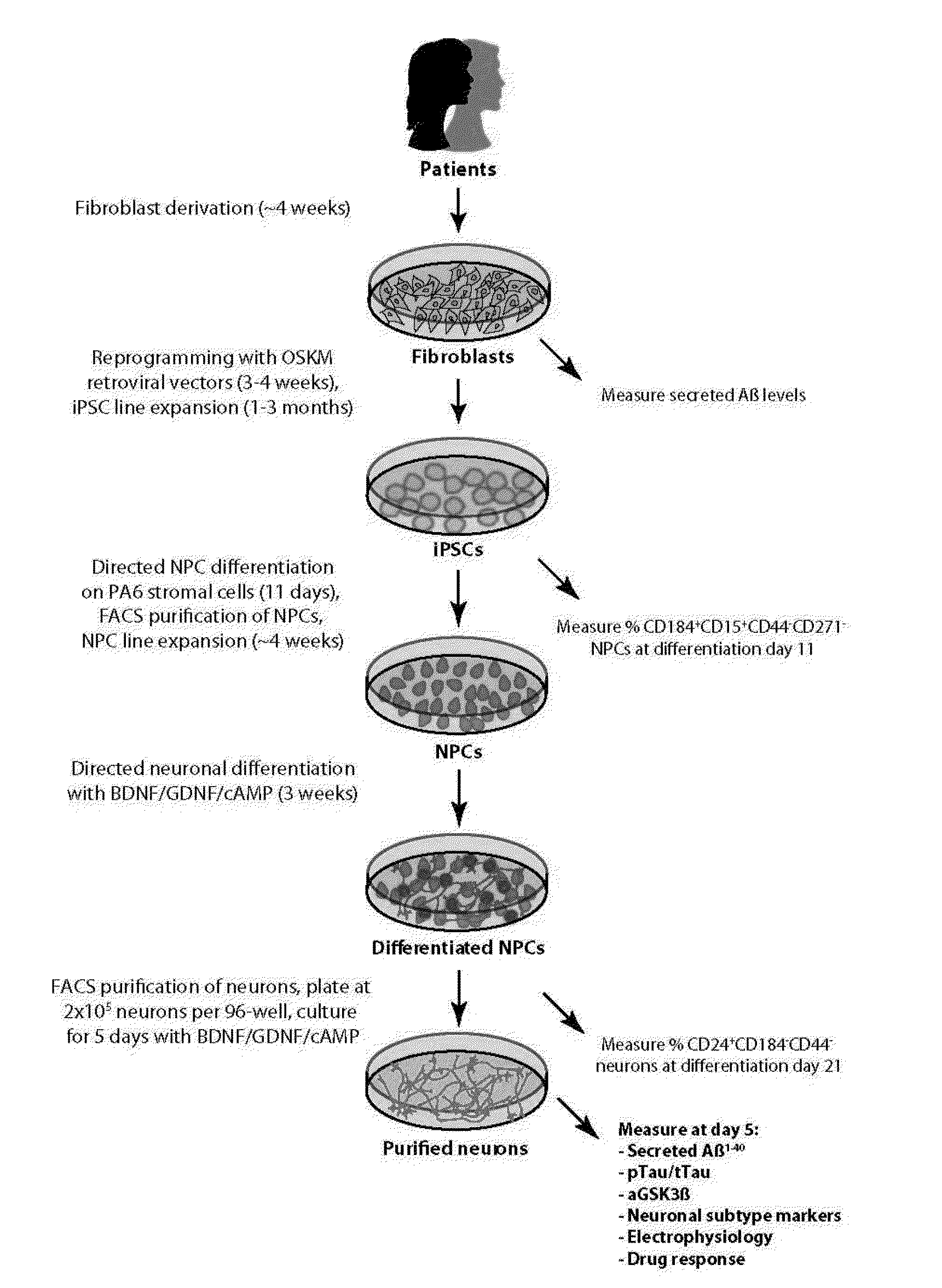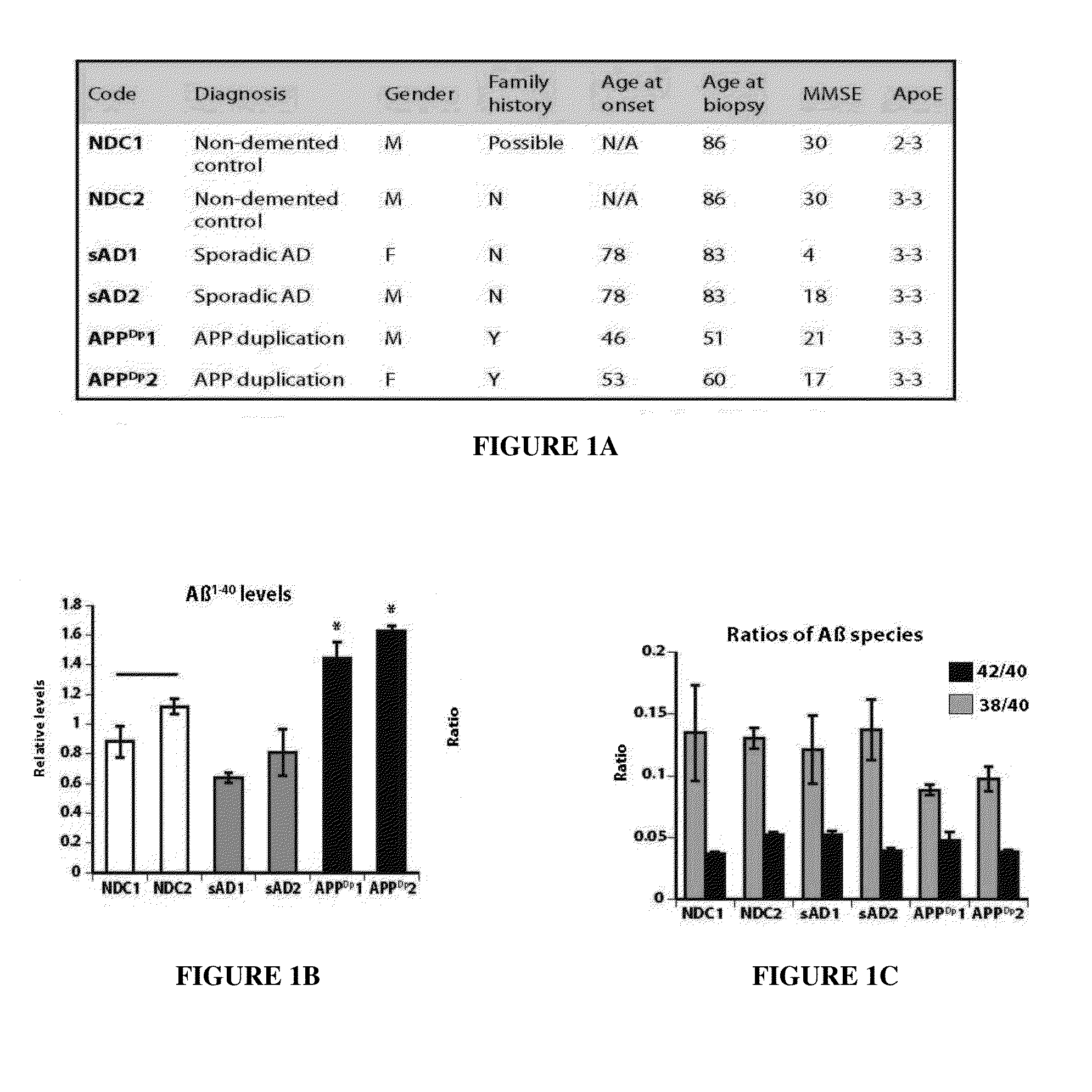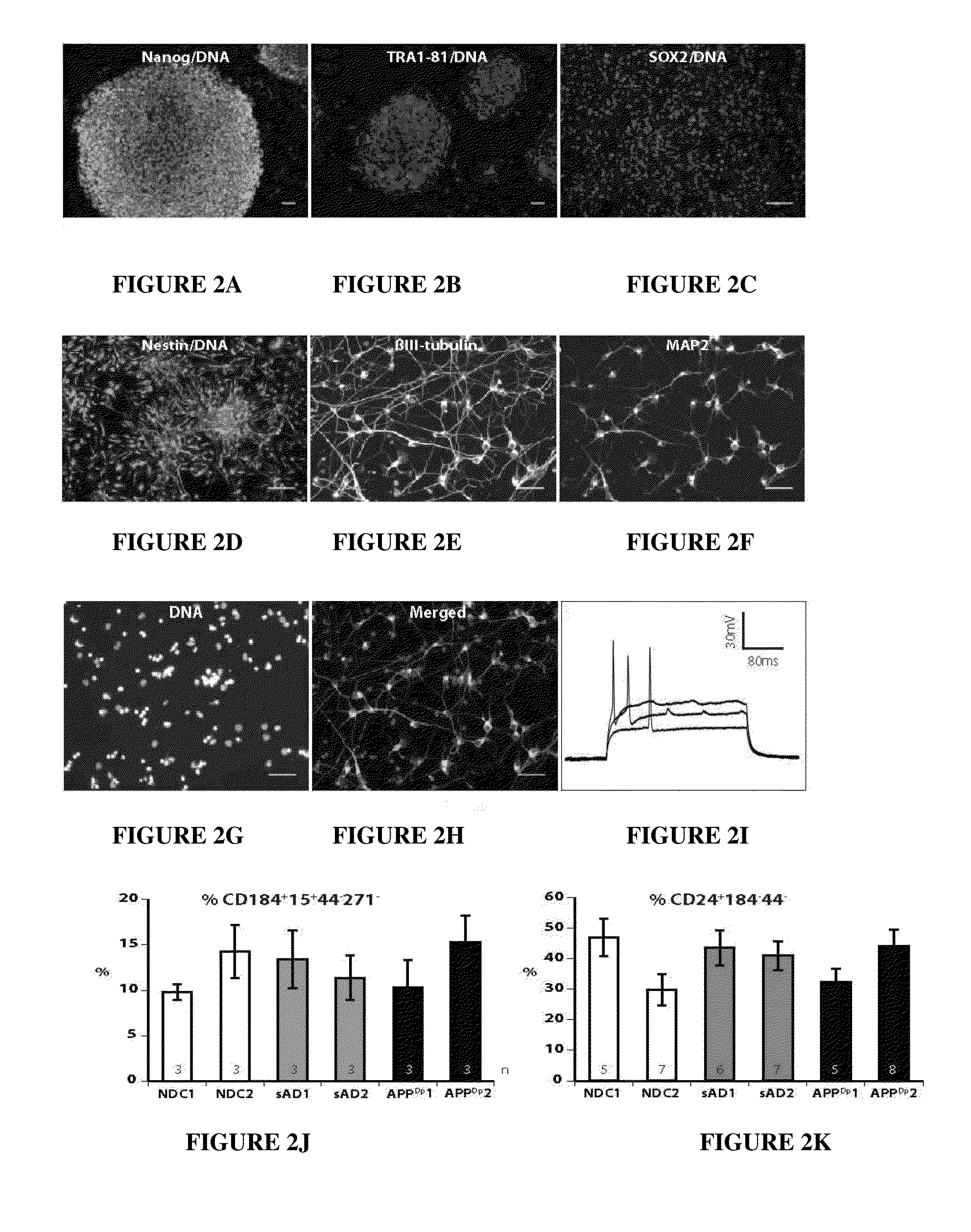Alzheimer's Disease Cellular Model for Diagnostic and Therapeutic Development
- Summary
- Abstract
- Description
- Claims
- Application Information
AI Technical Summary
Benefits of technology
Problems solved by technology
Method used
Image
Examples
examples
[0050]Basic fibroblast phenotypes were characterized prior to reprogramming to iPSC (FIGS. 1 and 6). APP expression and Aβ secretion were quantified in early-passage primary fibroblasts from two non-demented control individuals (NDC), two patients with sAD, and two APPDp patients. The presence of the genomic duplication was confirmed in fibroblasts. Relative to NDC and sAD cells, APPDp fibroblasts expressed higher levels of APP mRNA and secreted 1.5- to 2-fold higher amounts of Aβ1-40 peptides into the conditioned media compared to NDC cells. No significant difference was detected in Aβ 1-42 / 1-40 or 1-38 / 1-40 between any of the patients.
[0051]iPSC lines were generated by transducing fibroblasts with retroviruses encoding OCT4, SOX2, KLF4, c-MYC, and, in ⅓ of cases, EGFP. Each of the six individuals was represented by three clonal iPSC lines. All 18 iPSC lines maintained embryonic stem cell (ES)-like morphology and expressed the pluripotency-associated proteins nanog and TRA1-81 (FIG...
PUM
| Property | Measurement | Unit |
|---|---|---|
| Fraction | aaaaa | aaaaa |
| Action potential | aaaaa | aaaaa |
| Current | aaaaa | aaaaa |
Abstract
Description
Claims
Application Information
 Login to View More
Login to View More - R&D
- Intellectual Property
- Life Sciences
- Materials
- Tech Scout
- Unparalleled Data Quality
- Higher Quality Content
- 60% Fewer Hallucinations
Browse by: Latest US Patents, China's latest patents, Technical Efficacy Thesaurus, Application Domain, Technology Topic, Popular Technical Reports.
© 2025 PatSnap. All rights reserved.Legal|Privacy policy|Modern Slavery Act Transparency Statement|Sitemap|About US| Contact US: help@patsnap.com



